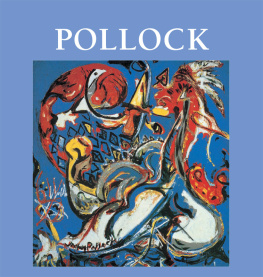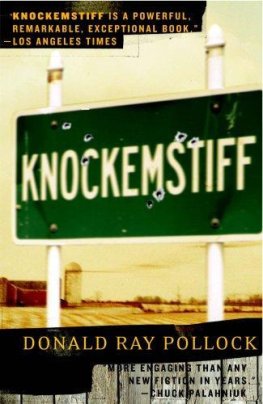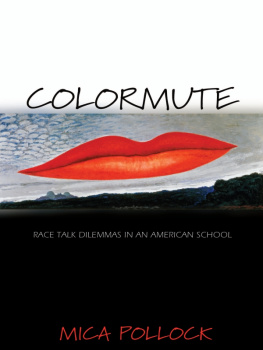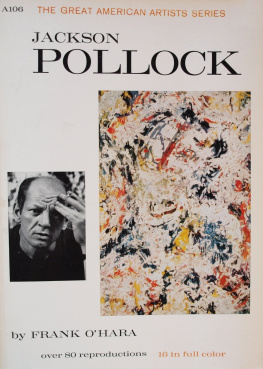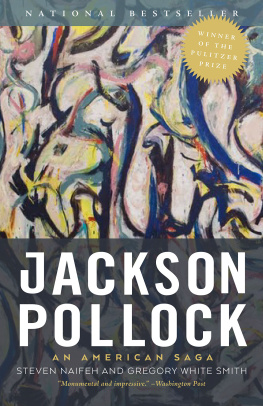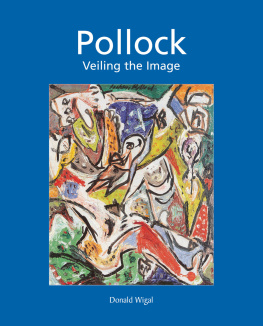
Text: Donald Wigal
Layout: Baseline Co Ltd
61A-63A Vo Van Tan
th Floor
District 3, Ho Chi Minh City,
Vietnam.
Confidential Concepts, worldwide, USA
Parkstone Press International, New York, USA
Pollock Estate/ Artists Rights Society, New York, USA
ISBN: 978-1-78160-633-9
All rights reserved.
N o part of this book may be reproduced or adapted without the permission of the copyright holder, throughout the world.
Unless otherwise specified, copyright on the works reproduced lies with the respective photographers. Despite intensive research, it has not always been possible to establish copyright ownership. Where this is the case, we would appreciate notification.
Jackson
Pollock

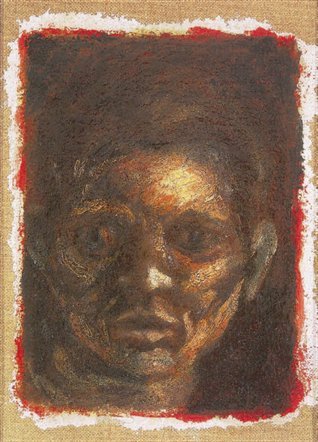
1. Untitled (Self-portrait), 1931-1935.
Oil on gesso on canvas mounted
on fibreboard, 18.4 x 13.3 cm,
The Pollock-Krasner Foundation, New York.
F ifty years ago the artist Jackson Pollock died, but he lives on in his biographies and especially in his work. However, much of his genius was expressed by how he veiled the visible while he unveiled the invisible.
It may be that by veiling himself and his art as he so uniquely did, Pollock paradoxically revealed much of his interior life, thereby making it possible to see and better understand therein something of his spiritual journey if not also something of the universal human journey.
Many of the events in Pollock s life and much of his radically new art proved to be mystically profane and ugly, yet awesome. At times the artist, like his art, appears to be innocent, graceful and sensitive. At the same time, his life and art might seem to be crude, macho and abrasive. The biographer Andrea Gabor considers him to be brilliant and na ve, gentle and aggressive, vulnerable and destructive. She observes, Few artists... seemed to personify the masculine excesses of the era more completely than Jackson Pollock, who came to represent an archetype of unbridled artistic vitality.
The cycles of Pollock s life and art overlap at times, sometimes appearing to have the ambivalent traits of a child-man, angel-beast, and creator-destroyer. Many observers of his work are both kept at a distance by what is ugly and yet pulled into what is beautiful in the realities of the artist s rugged presence and his brilliant achievements. At the same time, his private, self-destructive compulsions and isolation ironically drove him to his highly public end fifty years ago.
The myth of the artist cowboy
On 28 January, 1912, Paul Jackson Pollock was born on Watkins Ranch in Cody, Wyoming. In a unique way Pollock would carry on the spirit of some of Cody s most exciting pioneering, rebellious and wild images, as well as myths about legendary American cowboys. Although Pollock spent only his first few months as an infant in Cody, he didn t correct people who presumed he lived in that truly Western town until he arrived in New York City. Willem de Kooning s biographers state, Pollock s self-destruction had a kind of grandeur that many in the art world respected. Pollock seemed a purely American figure, an authentic visionary, cowboy, and maverick. McCoy was the birth name of Jackson s father, LeRoy. After the death of LeRoy s parents in 1897, he was taken care of by a family named Pollock. Ten days before his twenty-first birthday, LeRoy was adopted by the Pollocks. He then took on the name Pollock. Later he asked a lawyer to have his name changed back to McCoy, but doing so was too expensive.
Jackson was the youngest of five boys in the family of LeRoy McClure Pollock (1876-1933) and Stella May (1875-1958). His brothers were Charles Cecil (1902-1988), Marvin Jay (1904-1986), Frank Leslie (1907-1994), and Sanford Sande LeRoy (1909-1963).

2. T.P.s Boat in Menemsha Pond, c.1934.
Oil on metal, 11.7 x 16.2 cm,
New Britain Museum of
American Art, New Britain.
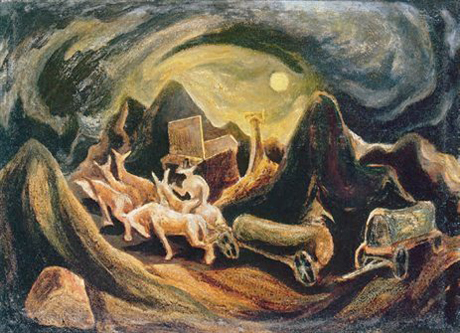
3. Going West, 1934-1935.
Oil on gesso on fibreboard, 38.3 x 52.7 cm,
National Museum of American Art,
Smithsonian Institution, Washington.

4. Untitled (Woman), c.1935-1938.
Oil on fibreboard, 35.8 x 26.6 cm,
Nagashima Museum, Kagoshima City, Japan.

5. Untitled (Naked Man with a Knife), c.1938-1940.
Oil on canvas, 127 x 91.4 cm,
Tate Gallery, London.
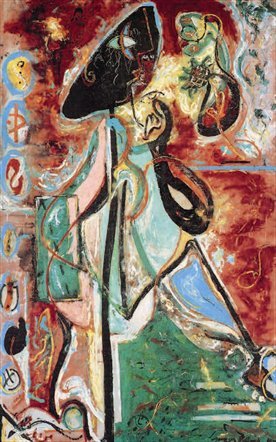
6. The Moon Woman, 1942.
Oil on canvas, 175.2 x 109.3 cm,
The Solomon R. Guggenheim
Foundation, New York.
Throughout his life, Pollock would mention growing up in Cody; however, he actually spent less than his first ten months in the town before the family moved to National City, near San Diego, California. The move would be the first of several during Jackson s youth. For example, after only eight months in National City the Pollock family moved again. In 1913, at age thirty-seven, LeRoy bought a truck farm in Phoenix, Arizona. He sold it only four years later, and then moved the family to Chico, California, where he bought and sold another farm, and then bought a hotel in Janesville.
Some biographers have observed that during his first decade, Jackson lived in six different houses as his father tried job after job, without much success, in three states. In California alone, the Pollock family lived in eight different places. Pollock s difficulty in establishing social links throughout his adolescence became apparent rather quickly, in fact shortly after enrolling at his school in Riverside in 1927. The overall effect of these frequent moves possibly contributed to the future artist s life-long sense of unrest, instability, and his difficulties in social groups. On the other hand, he might also have learned something about adaptability.
Pollock s parents were originally from Iowa, the state just east of Jackson s birth state of Wyoming. They were Presbyterians of Scottish and Irish origin; their ancestors had been Quakers, but they did not indoctrinate their children into any religion.
A 1927 photo of fifteen-year-old Jackson taken by Lee Ewing is the only one showing him posing in Western garb. It contributes significantly to the myth of Pollock as a cowboy. Maybe because of America s admiration for the pioneers of the country s West and the mythology of the American cowboy, Pollock often seemed to be forgiven for his crude behaviour. Some observers might even say that the tolerance extended to his reckless drunken driving, if not also to its ultimate consequences. Minutes before his death while driving drunk, a policeman who knew Pollock would unfortunately overlook his drunken state. Like some of the rough-edged characters of Western fiction, Pollock would live out a boisterous and often crude Wild West spirit, especially in the bars of Lower Manhattan.
Next page
